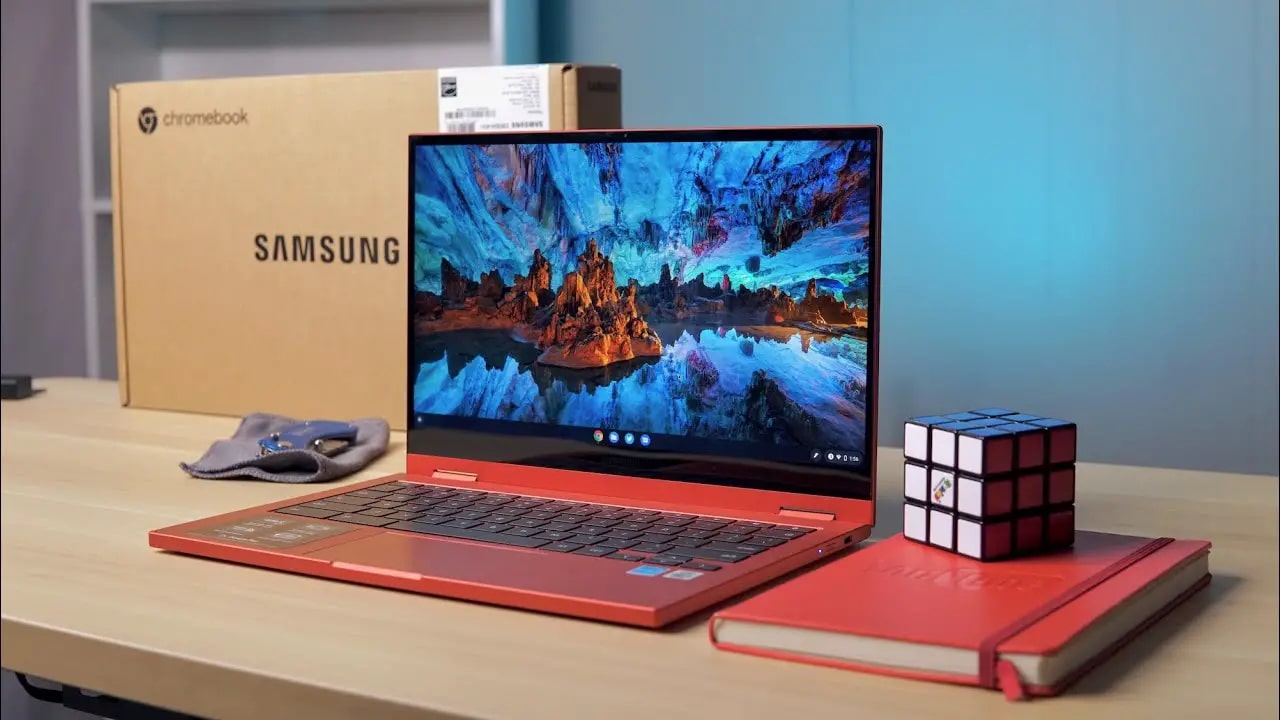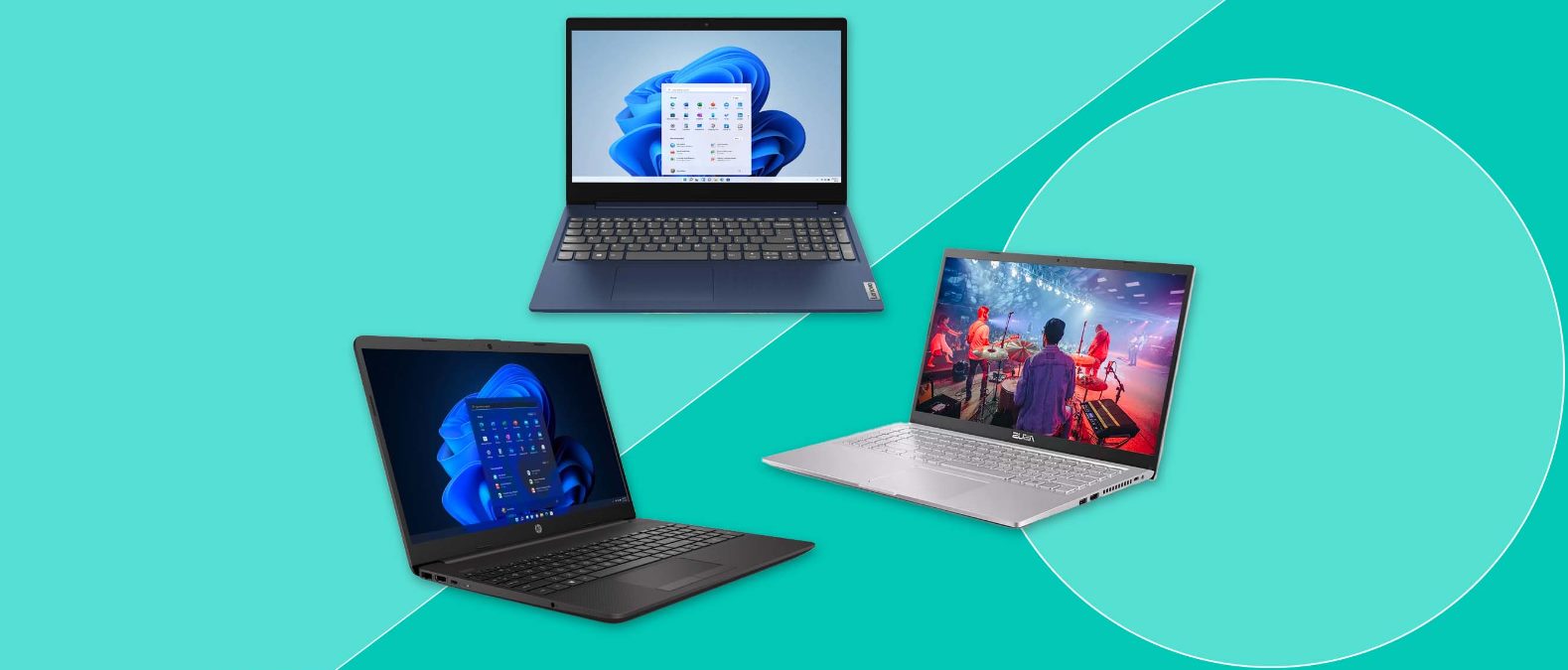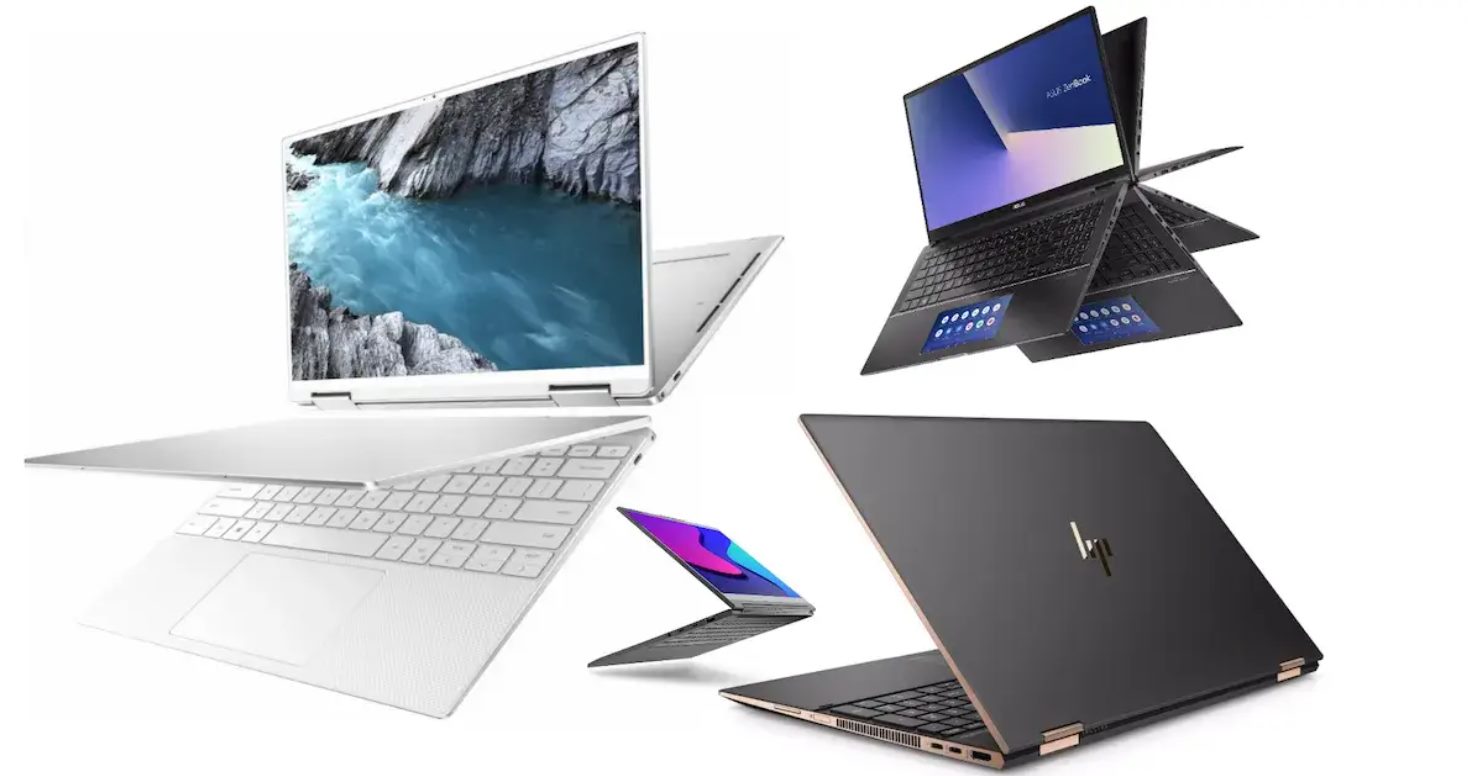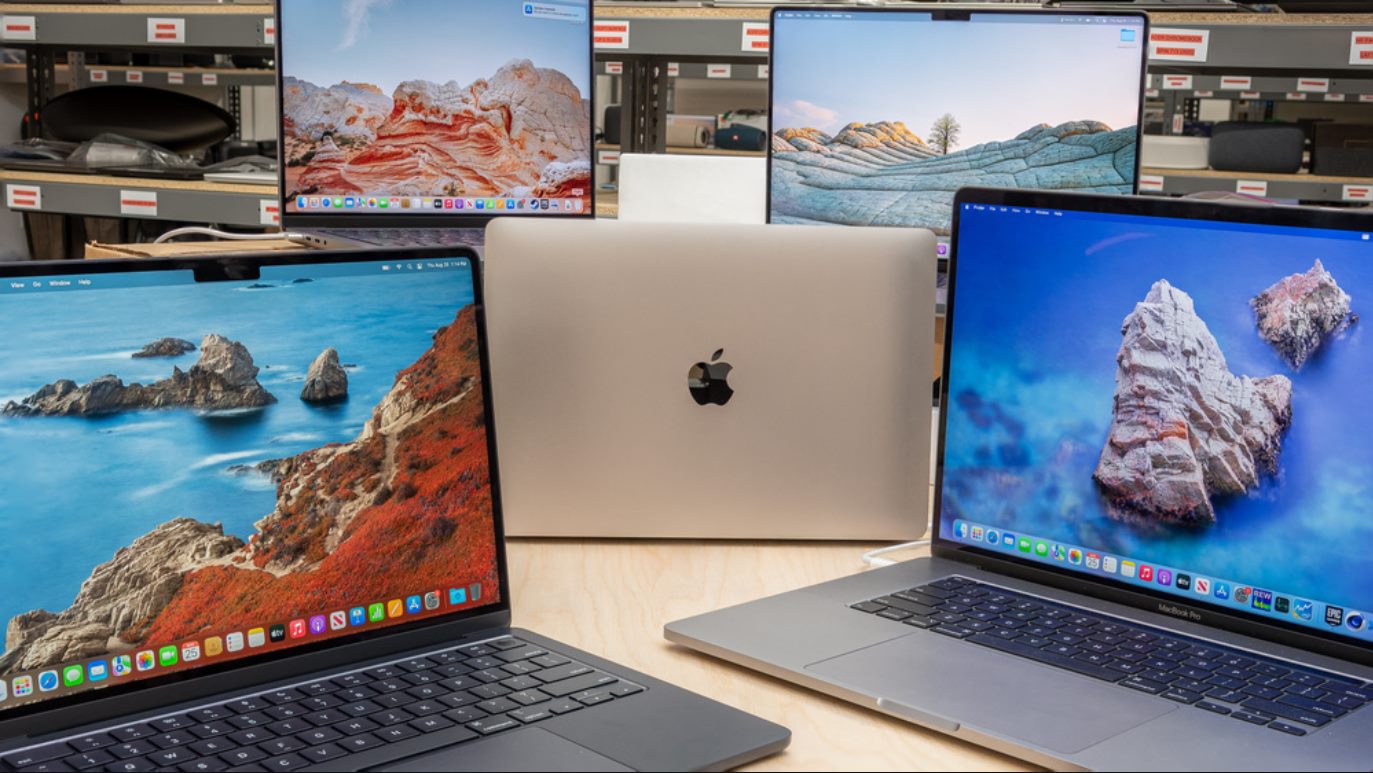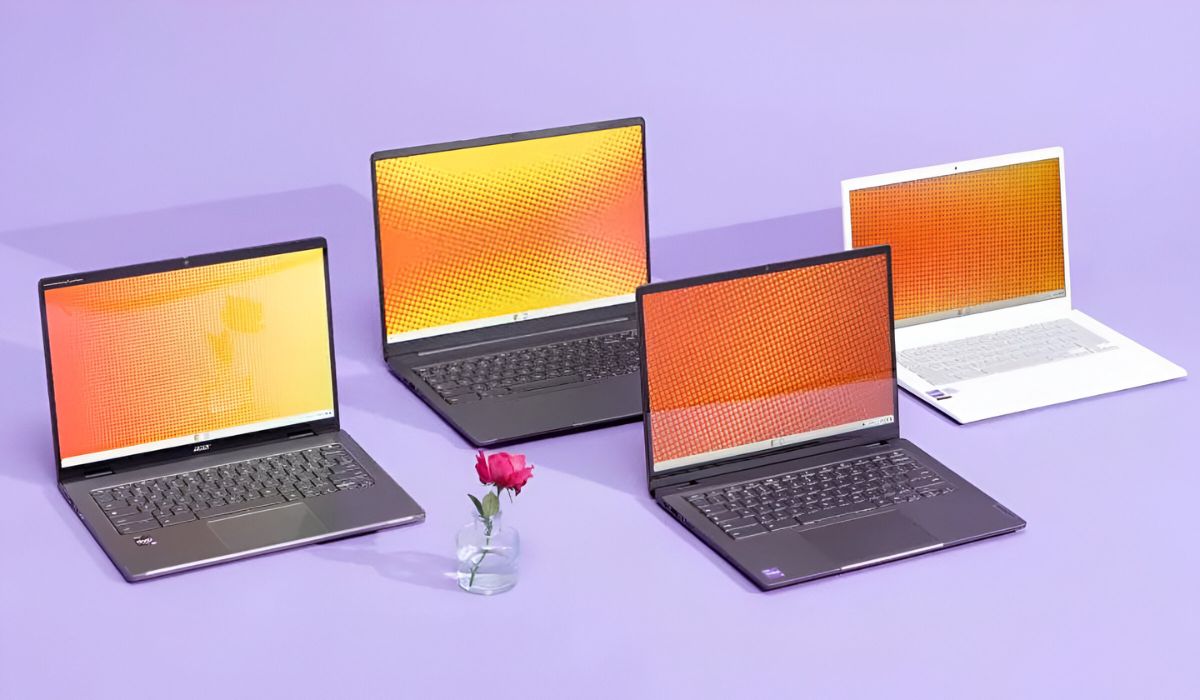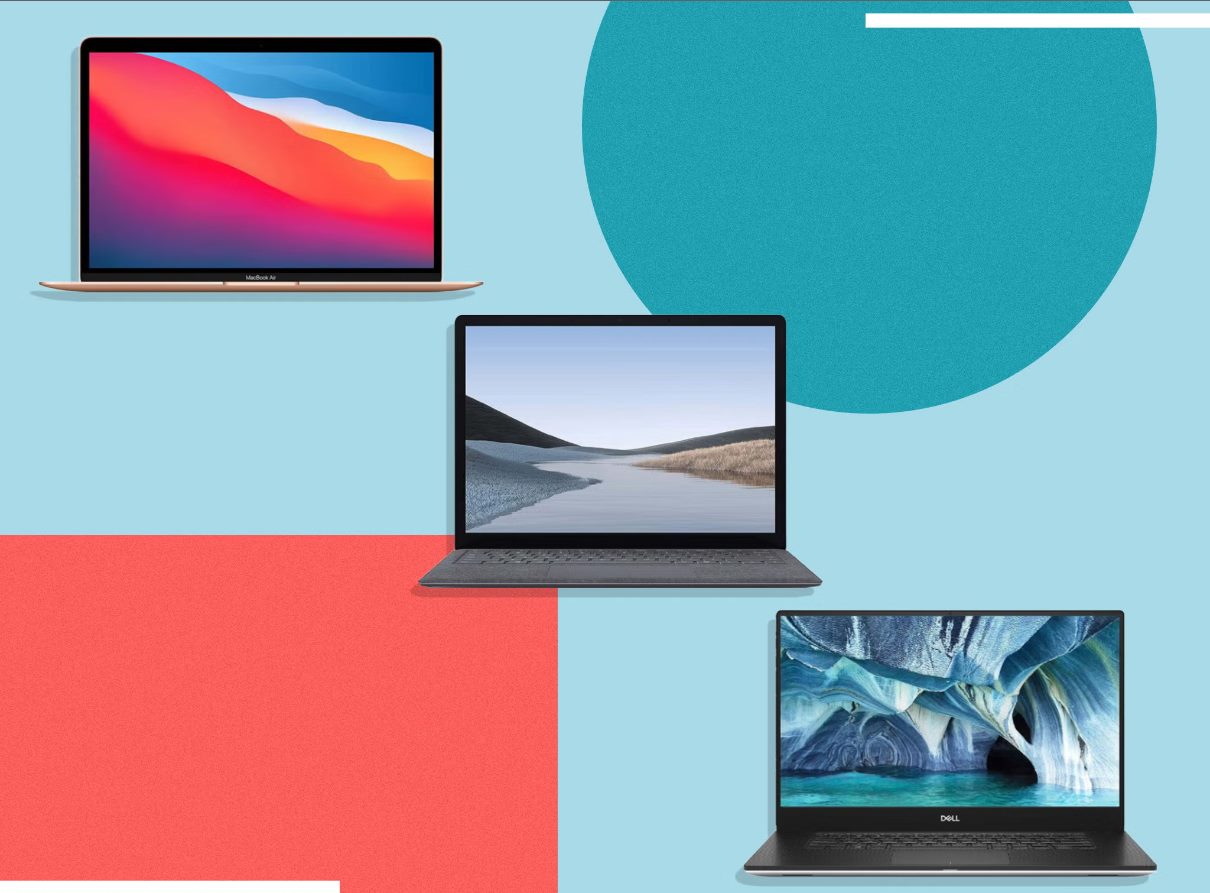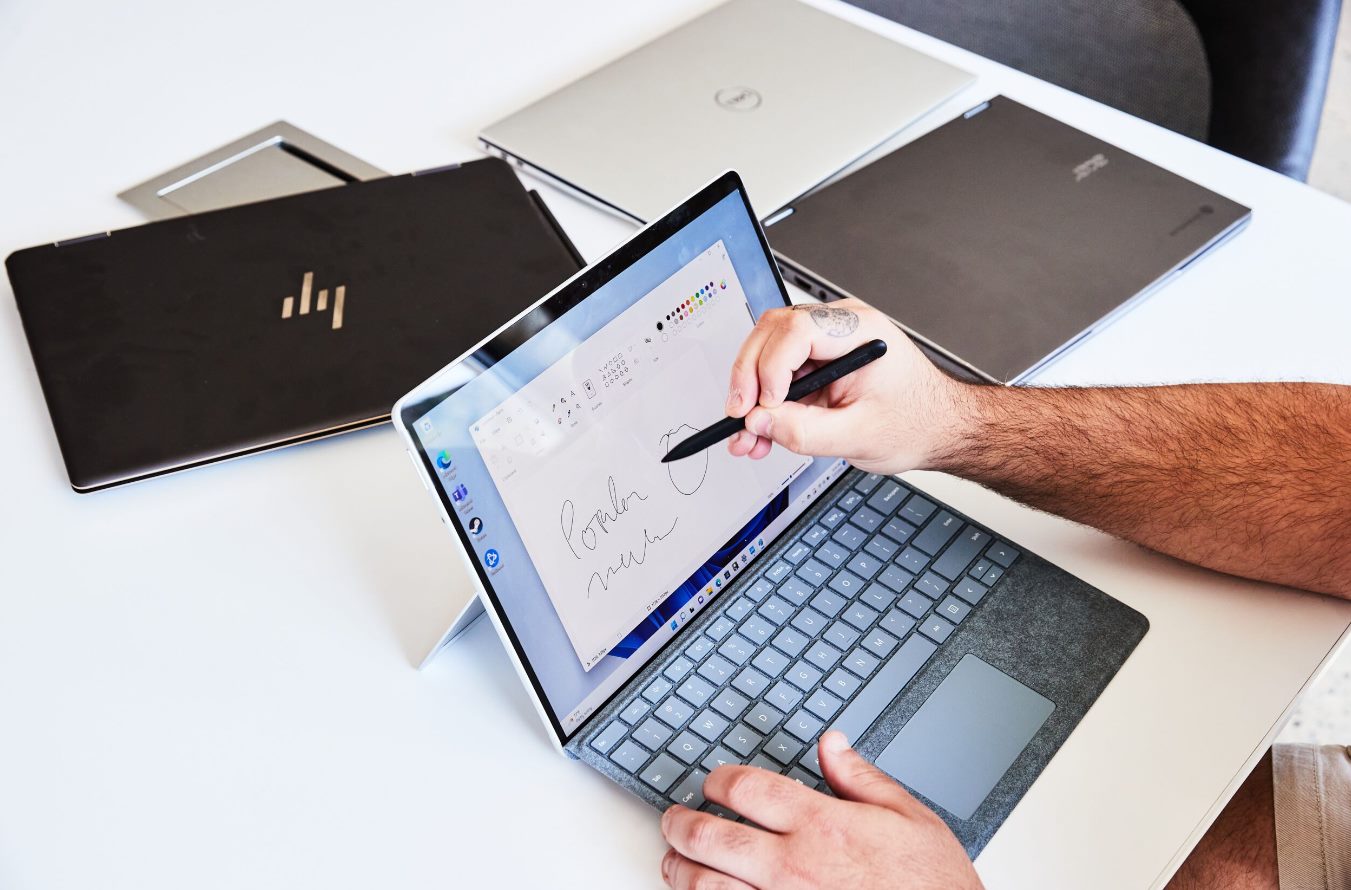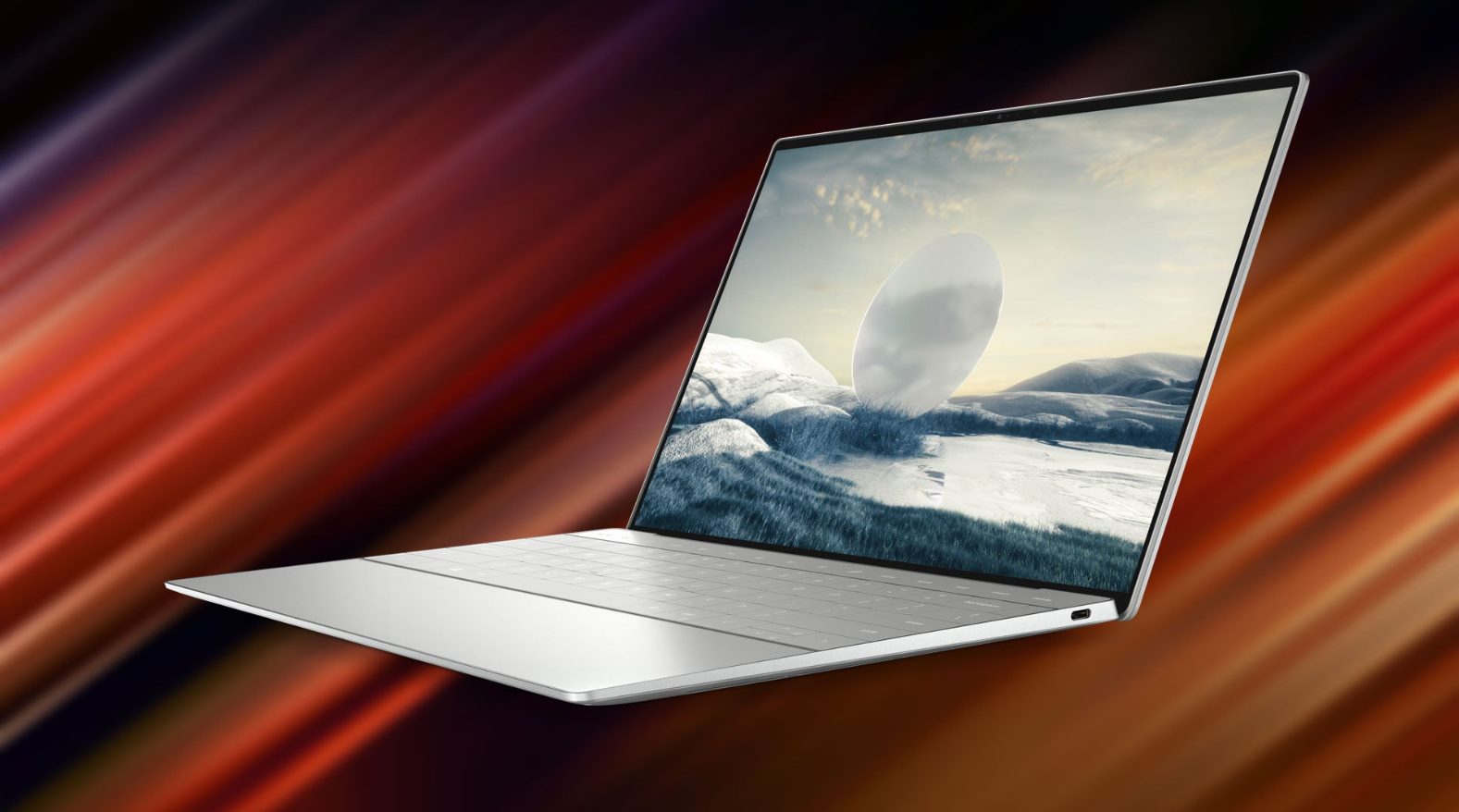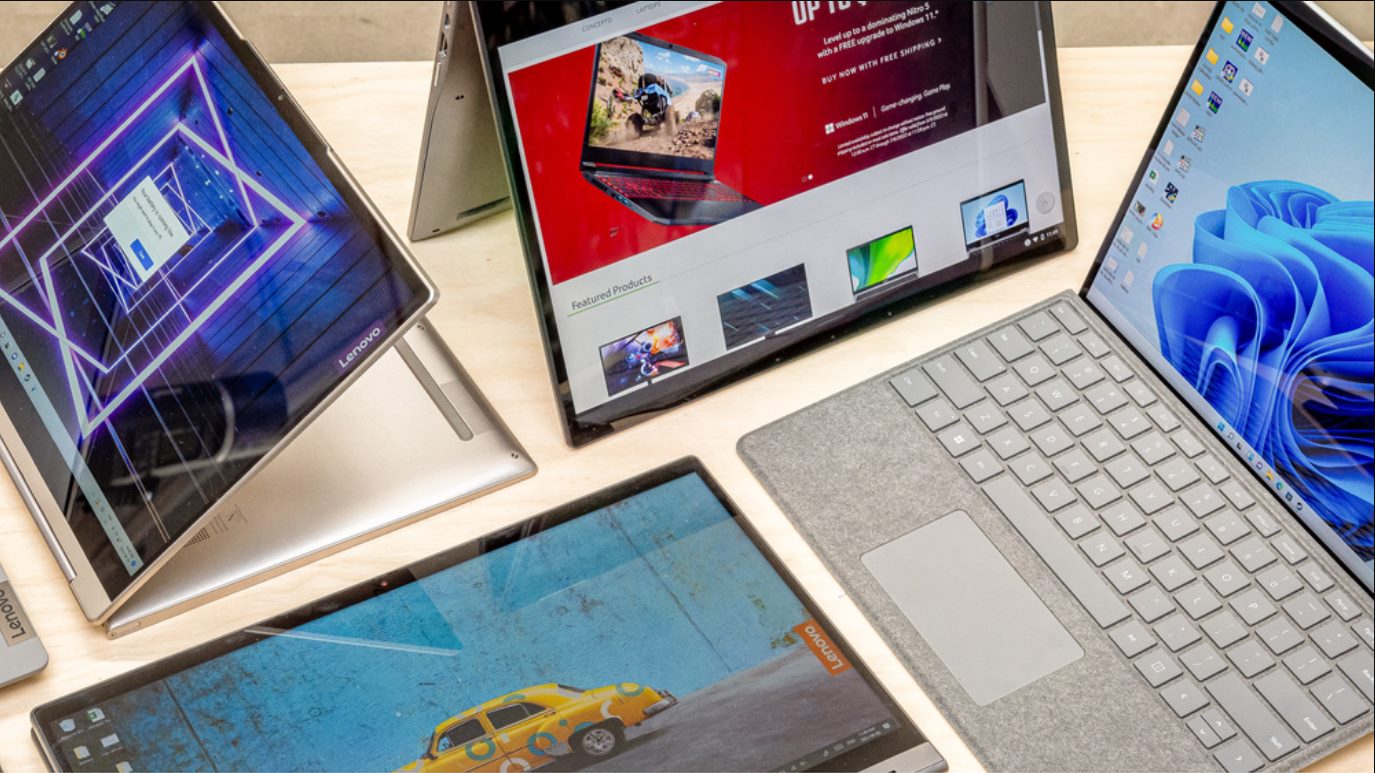Introduction
Graphics cards, also known as video cards or GPUs (Graphics Processing Units), play a crucial role in determining the visual experience and performance of a computer. These powerful components are responsible for rendering images, videos, and other graphical elements on a screen.
But what about Chromebooks? Are graphics cards equally important in these lightweight laptops known for their web-based functionality and affordability? While Chromebooks are not traditionally associated with high-end graphic-intensive tasks like gaming or graphic design, they still rely on graphics cards to handle everyday graphics processing.
A Chromebook is a type of laptop that runs on Chrome OS, a lightweight operating system developed by Google. These devices are designed with simplicity and efficiency in mind, providing users with a fast and secure computing experience centered around web-based applications and services.
While Chromebooks primarily focus on web browsing, document editing, and online activities, graphics cards are still necessary for tasks such as streaming videos, displaying high-quality images, and running certain applications and games.
In this article, we will explore the role of graphics cards in Chromebooks and take a closer look at the different types of graphics cards commonly found in these devices. We will also discuss the possibility of upgrading graphics cards in Chromebooks and the implications it may have on their overall performance.
So, whether you’re a Chromebook user curious about the graphics capabilities of your device or someone considering purchasing a Chromebook, read on to discover more about the role of graphics cards in these lightweight laptops.
Why Do Graphics Cards Matter?
Graphics cards play a critical role in determining the visual performance and capabilities of a computer. Here are a few reasons why graphics cards matter:
- Enhanced Visual Experience: A powerful graphics card can greatly enhance the visual experience of a computer. It allows for smooth rendering of high-resolution images, videos, and graphics-intensive applications. Whether you’re watching videos, playing games, or editing images, a capable graphics card ensures crisp and realistic visuals.
- Improved Gaming Performance: For gamers, a dedicated graphics card is essential. It provides the necessary processing power to run modern games at higher resolutions and frame rates. Graphics cards with dedicated memory and efficient cooling systems can handle complex graphics and deliver a smooth gaming experience.
- Efficient Video Editing and 3D Modeling: Video editing and 3D modeling software require significant computing power, especially for rendering and processing high-quality video footage and complex 3D models. A high-performance graphics card can accelerate these tasks, reducing rendering times and enabling smooth real-time editing.
- Hardware Accelerated Tasks: Graphics cards provide hardware acceleration for various tasks, offloading the processing workload from the CPU. This allows for faster and more efficient execution of tasks such as video encoding, image processing, and scientific simulations.
- Multi-Monitor Support: Graphics cards with multiple display outputs allow users to connect multiple monitors to their computers. This is particularly useful for professionals who require an expanded workspace or gamers who want a more immersive gaming experience across multiple screens.
As we can see, graphics cards play a crucial role in enhancing the visual experience and performance of a computer. In the case of Chromebooks, while they may not be primarily designed for intensive gaming or resource-demanding tasks, a capable graphics card still contributes to a smooth and visually pleasing user experience, ensuring that graphics-intensive web-based applications and media content can be handled efficiently.
What is a Chromebook?
A Chromebook is a type of laptop that runs on Chrome OS, an operating system developed by Google. Unlike traditional laptops that use Windows or macOS, Chromebooks are designed to primarily connect to the internet and utilize web-based applications and services.
Chromebooks are known for their lightweight and portable design, long battery life, and affordable price tags. They are popular among students, casual users, and individuals who prioritize web browsing, email, document editing, and other online activities.
Instead of relying on heavy local storage and software installations, Chromebooks excel at cloud-based computing. Users store their files, documents, and applications on Google Drive or other cloud platforms, allowing for easy access from any device with an internet connection.
Chrome OS, the operating system powering Chromebooks, is designed to be secure, fast, and user-friendly. It incorporates the Chrome web browser as its interface, meaning that most tasks are performed through the browser itself. This lightweight approach contributes to faster boot times and smoother overall performance.
In terms of hardware, Chromebooks come in various forms and sizes, ranging from compact 11-inch models to larger 15-inch versions. They often feature lightweight construction, solid-state drives (SSD) for storage, and energy-efficient processors.
Chromebooks also utilize an app ecosystem called the Chrome Web Store, which provides a range of web-based applications and extensions. Users can install productivity tools, games, entertainment apps, and more directly from the store, enhancing the functionality and versatility of their Chromebooks.
It’s important to note that while Chromebooks have limitations in terms of software compatibility (such as running traditional desktop applications), they excel in providing a seamless and user-friendly experience for web-based tasks. The combination of Chrome OS, cloud-based computing, and an emphasis on internet connectivity makes Chromebooks a popular choice for individuals who seek an efficient, affordable, and easy-to-use laptop for everyday online activities.
Graphics Cards in Chromebooks
While Chromebooks are not typically associated with intensive graphic-intensive tasks like gaming or graphic design, they still rely on graphics cards to handle everyday graphical processing. Graphics cards in Chromebooks are responsible for rendering images, videos, animations, and other visual elements on the screen.
Chromebooks primarily use integrated graphics cards, which are built directly into the processor (CPU) or system-on-a-chip (SoC). Integrated graphics cards are sufficient for most web-based tasks, ensuring smooth video playback, web browsing, and casual gaming.
Integrated graphics cards offer a balance between performance and power efficiency, making them suitable for the compact and lightweight design of Chromebooks. They share system memory with the CPU, which means they don’t have dedicated memory for graphics processing. Instead, they utilize a portion of the available RAM, which can affect overall system performance when running graphics-intensive applications.
It’s important to note that the specific graphics card used in a Chromebook can vary depending on the model and manufacturer. Chromebook manufacturers often partner with different hardware suppliers like NVIDIA, AMD, and Intel to provide graphics solutions that meet the requirements of their devices.
Chromebooks are designed to prioritize efficiency and battery life, and therefore, they may not have the most powerful or cutting-edge graphics cards. However, for everyday tasks like web browsing, video streaming, and document editing, the integrated graphics cards found in Chromebooks are generally sufficient.
It’s also worth mentioning that Chrome OS is optimized to leverage hardware acceleration for graphics processing. This means that while the graphics card may not be as powerful as those found in dedicated gaming laptops or workstations, the combination of Chrome OS and the integrated graphics card still provides a smooth and responsive user experience for most typical use cases.
In the next sections, we will explore the common graphics cards used in Chromebooks, including those from NVIDIA, AMD, and Intel. We will also discuss the possibility of upgrading graphics cards in Chromebooks, which can further enhance their graphical performance and capabilities.
Integrated vs. Dedicated Graphics Cards
When it comes to graphics cards, there are two main types: integrated and dedicated. Understanding the difference between these two types is important to grasp the graphics capabilities of Chromebooks.
Integrated graphics cards, as the name suggests, are built directly into the computer’s processor or system-on-a-chip. They rely on shared system memory, utilizing a portion of the RAM, for graphics processing. Integrated graphics cards are commonly found in laptops, including Chromebooks, as they offer a more power-efficient and compact solution.
Dedicated graphics cards, on the other hand, are separate components that have their own dedicated memory and processing units. These cards are designed specifically for graphics-intensive tasks, such as gaming, video editing, and 3D modeling. Dedicated graphics cards provide superior performance and are favored by professionals and gaming enthusiasts.
In terms of performance, dedicated graphics cards generally outshine integrated graphics cards. They offer faster processing speeds, dedicated memory, and more advanced features, making them ideal for demanding applications and visually intensive tasks.
When it comes to Chromebooks, most models utilize integrated graphics cards due to their compact form factor and power-efficient nature. This allows Chromebooks to offer longer battery life and a more lightweight design.
Integrated graphics cards in Chromebooks are sufficient for everyday tasks such as web browsing, document editing, video streaming, and casual gaming. They prioritize efficiency and power savings over raw performance, making them suitable for the web-based focus of Chrome OS.
While integrated graphics cards may not deliver the same level of performance as dedicated graphics cards, they still provide a smooth and responsive user experience for most typical use cases on Chromebooks.
It’s worth noting that some Chromebook models may have variations in graphics capabilities, as different manufacturers may use graphics solutions from hardware suppliers like NVIDIA, AMD, or Intel. These variations can affect the overall graphics performance and capabilities of the Chromebook.
Now that we have a better understanding of integrated and dedicated graphics cards, let’s explore the common graphics cards found in Chromebooks, including those from NVIDIA, AMD, and Intel.
Common Graphics Cards in Chromebooks
Chromebooks utilize a range of graphics cards from different manufacturers to provide varying levels of graphics performance. Let’s explore some of the common graphics cards found in Chromebooks:
- NVIDIA Graphics Cards: NVIDIA is a renowned player in the graphics card market, known for its high-performance GPUs. Some Chromebook models feature NVIDIA’s graphics solutions, such as the NVIDIA Tegra K1 or the newer NVIDIA Tegra X1. These graphics cards offer enhanced visual capabilities, making them suitable for media streaming, light gaming, and other graphical tasks.
- AMD Graphics Cards: AMD is another key player in the graphics card industry, offering a range of GPUs across various price points. While less common in Chromebooks compared to NVIDIA or Intel, certain models may incorporate AMD Radeon graphics, providing improved graphical performance for multimedia tasks and casual gaming.
- Intel Graphics Cards: Intel is well-known for its integrated graphics solutions, which are prevalent in many Chromebook models. Intel’s integrated graphics cards, such as Intel HD Graphics or Intel UHD Graphics, are designed to balance power efficiency and performance. These cards provide sufficient graphics capabilities for everyday tasks like web browsing, online streaming, and productivity applications.
It’s important to note that the specific graphics card used in a Chromebook can vary depending on the model and manufacturer. While some Chromebooks may feature more powerful graphics cards from NVIDIA or AMD, the majority of Chromebooks rely on integrated graphics solutions from Intel.
Chromebooks prioritize power efficiency, portability, and affordability, which is reflected in their choice of graphics cards. While they may not offer the same level of graphics performance as dedicated gaming laptops or high-end workstations, the integrated graphics cards found in Chromebooks are generally sufficient for everyday tasks and web-based applications.
Now that we have explored the common graphics cards in Chromebooks, let’s delve into the specifics of NVIDIA, AMD, and Intel graphics cards in Chromebooks and how they contribute to the overall performance and capabilities of these devices.
NVIDIA Graphics Cards for Chromebooks
NVIDIA, a well-known name in the graphics card industry, offers a range of GPUs that provide superior performance and advanced visual capabilities. While NVIDIA graphics cards are more commonly associated with gaming laptops and high-end workstations, some Chromebook models incorporate NVIDIA’s graphics solutions to enhance graphics performance and support certain applications.
One of the NVIDIA graphics cards commonly found in Chromebooks is the NVIDIA Tegra K1. This GPU offers impressive graphics processing power and is capable of handling tasks like media streaming, light gaming, and image/video editing on Chromebooks. It delivers smooth visuals and improved performance for web-based applications that require more advanced graphical capabilities.
Another NVIDIA graphics card used in some Chromebooks is the newer NVIDIA Tegra X1. This GPU is more powerful than its predecessor, providing enhanced graphical performance for multimedia tasks and casual gaming experiences on Chromebooks. With the Tegra X1, Chromebook users can enjoy smoother video playback, higher-quality graphics, and potentially run more graphics-intensive applications.
It’s important to note that while NVIDIA graphics cards in Chromebooks bring improved graphics capabilities, they may not be as common as integrated graphics solutions from Intel. Chromebooks with NVIDIA graphics cards are often targeted towards users who require higher graphics performance or engage in more demanding tasks.
Chromebooks with NVIDIA graphics can offer benefits such as better image and video rendering, improved gaming experiences, and seamless video playback. However, it’s important to carefully consider your specific needs and budget before opting for a Chromebook with an NVIDIA graphics card, as they may come at a higher price point.
While NVIDIA graphics cards in Chromebooks may not provide the same level of performance as dedicated gaming laptops or high-end workstations, they do contribute to enhancing the graphical capabilities and overall performance of the Chromebook, making it more suitable for multimedia tasks, productivity applications, and light gaming.
Now that we have explored NVIDIA graphics cards in Chromebooks, let’s examine another prominent player in the graphics card market: AMD. Stay tuned to learn about AMD graphics cards and their presence in Chromebooks.
AMD Graphics Cards for Chromebooks
While AMD is widely recognized for its graphics cards in the gaming and professional market, their presence in Chromebooks is less common compared to NVIDIA or Intel. However, certain Chromebook models do incorporate AMD graphics solutions to provide enhanced graphical performance for multimedia tasks and casual gaming.
AMD Radeon graphics cards offer a balance between performance and power efficiency, making them suitable for Chromebooks. While the specific models may vary, Chromebooks with AMD Radeon graphics can deliver smooth video playback, improved image rendering, and better graphics performance for web-based applications.
AMD graphics cards are known for their Advanced Micro Devices Mantle technology, which optimizes graphics performance by reducing CPU workloads and minimizing driver overhead. This technology can result in improved overall system performance and responsiveness on Chromebooks.
Chromebooks with AMD graphics cards can handle multimedia tasks such as video editing, image manipulation, and light gaming more effectively. They offer users a better visual experience, with optimized graphics processing that takes advantage of AMD’s dedicated graphics capabilities.
While AMD graphics cards may not be as prevalent in Chromebooks as integrated solutions from Intel, their inclusion provides users with the option to have a more capable graphics card for their specific needs.
It’s worth noting that the availability of AMD graphics in Chromebooks may depend on the specific manufacturer and model. Each Chromebook is unique and may offer a different combination of hardware components, including the type of graphics card used.
For those who prioritize enhanced graphics performance and require the extra computational power, a Chromebook with an AMD graphics card can be a suitable choice. It allows users to enjoy a smoother visual experience, better multitasking capabilities, and the ability to handle more graphics-intensive applications on their Chromebook.
Now that we have explored AMD graphics cards in Chromebooks, let’s turn our attention to the integrated graphics solutions offered by Intel, which are commonly found in most Chromebook models.
Intel Graphics Cards for Chromebooks
Intel, a leading manufacturer of computer processors, also offers integrated graphics solutions commonly found in Chromebooks. These Intel graphics cards provide a balance between performance and power efficiency, making them a popular choice for Chromebooks.
Chromebooks with Intel graphics cards utilize the integrated graphics solutions like Intel HD Graphics or Intel UHD Graphics. These integrated GPUs are designed to provide sufficient graphical capabilities for everyday tasks and web-based applications.
The Intel graphics cards found in Chromebooks offer hardware acceleration for video playback, allowing for smooth streaming and playback of high-definition content. They also support hardware decoding of popular video codecs, ensuring efficient and high-quality video playback, even at higher resolutions.
Intel’s integrated graphics solutions are optimized for power efficiency, enabling Chromebooks to offer longer battery life. They share system memory with the CPU, utilizing a portion of the available RAM for graphics processing. While this shared memory setup may limit the overall graphics performance compared to dedicated graphics cards, it is generally sufficient for typical web-based tasks and casual gaming on Chromebooks.
Chrome OS, the operating system on Chromebooks, works closely with Intel’s integrated graphics solutions to leverage hardware acceleration and optimize graphical performance. This collaboration ensures a smooth and responsive user experience for most web-based applications and tasks.
It’s worth noting that Intel regularly introduces improved generations of integrated graphics with each new line of processors. Chromebooks featuring the latest Intel processors benefit from advancements in Intel’s integrated graphics performance, providing better graphics capabilities, improved power efficiency, and enhanced visual experiences.
Overall, Chromebooks with Intel graphics cards offer a reliable and efficient graphics solution for everyday tasks such as web browsing, streaming media, and document editing. While they may not deliver the same level of performance as dedicated graphics cards, Intel graphics cards are well-suited for the web-centric nature of Chromebooks.
Now that we have explored Intel graphics cards in Chromebooks, let’s move on to the topic of upgrading graphics cards in Chromebooks and whether it is a viable option. Stay tuned to learn more!
Upgrading Graphics Cards in Chromebooks
Unlike desktop computers, the graphics cards in most Chromebooks are not designed to be user-replaceable or upgradeable. This is due to the compact and integrated nature of Chromebook designs, which prioritize portability, power efficiency, and cost-effectiveness.
Chromebooks typically utilize integrated graphics solutions that are soldered onto the motherboard, making it difficult for users to upgrade or swap out the graphics card. The graphics card is tightly integrated with the processor or system-on-a-chip (SoC), and replacing it would require specialized knowledge and tools.
Additionally, the firmware and operating system on Chromebooks are optimized for the specific graphics hardware that comes with the device. If the graphics card were to be upgraded, it may not be compatible with the system and could potentially cause compatibility issues or instability.
While it is technically possible to find Chromebooks with a dedicated or upgradable graphics card, these models are rare and often come at a higher cost. These specialized Chromebooks are typically targeted towards professionals who require more powerful graphics capabilities, such as graphic designers or video editors.
If you find yourself needing better graphics performance or more advanced graphics capabilities for tasks like gaming or intensive multimedia editing, it may be more practical to consider purchasing a different device, such as a gaming laptop or a traditional laptop with a dedicated graphics card.
However, it’s important to note that Chromebooks are primarily designed for web-based tasks and casual use, where integrated graphics cards are sufficient. They excel at web browsing, document editing, video streaming, and other online activities without the need for high-end graphics processing.
While upgrading the graphics card is not a viable option for most Chromebooks, users can still optimize their graphics performance by ensuring their device has the latest software updates, keeping unnecessary background applications closed, and managing system resources efficiently.
If you require more advanced graphics capabilities for specific tasks, you may consider using web-based applications or cloud services that offload the graphics processing to remote servers. These services can handle graphics-intensive tasks and deliver the results back to your Chromebook without requiring significant processing power on the device itself.
Overall, while you cannot easily upgrade the graphics card in a Chromebook, it’s important to keep in mind that the integrated graphics solution they come with is generally sufficient for most users’ needs. Chromebooks offer a reliable and cost-effective solution for web-based tasks and everyday computing without the need for high-performance graphics processing.
Now that we have explored the topic of upgrading graphics cards in Chromebooks, let’s wrap up our discussion with a brief summary and key takeaways.
Conclusion
In conclusion, while Chromebooks may not be traditionally associated with high-performance graphics, they still rely on graphics cards to handle everyday graphical processing. These lightweight laptops utilize integrated graphics solutions from manufacturers like Intel, NVIDIA, and AMD to ensure smooth video playback, web browsing, and multimedia tasks.
Graphics cards play a crucial role in enhancing the visual experience and performance of a computer. For Chromebooks, integrated graphics cards strike a balance between power efficiency and performance, making them suitable for the web-based focus of Chrome OS.
Although it is not common to find upgradable graphics cards in Chromebooks due to their compact and integrated design, users can still optimize their graphics performance by keeping their devices up to date, managing system resources efficiently, and utilizing web-based applications and cloud services for more demanding tasks.
When considering which Chromebook to purchase, it’s essential to assess your specific needs. Chromebooks with NVIDIA graphics cards offer improved graphical capabilities for media streaming and light gaming, while those with AMD graphics cards provide enhanced performance for multimedia tasks. Chromebooks with Intel graphics cards offer power efficiency and reliability for everyday tasks.
Ultimately, Chromebooks with their integrated graphics solutions excel at providing a fast, secure, and user-friendly web-centric computing experience. They are affordable and portable options that cater to students, casual users, and those who prioritize online activities.
Whether you’re a current Chromebook user or considering purchasing one, understanding the role and limitations of graphics cards in these devices will help you make an informed decision and optimize your overall user experience.
So, go ahead and enjoy the simplicity and efficiency of Chromebooks while appreciating the role that graphics cards play in providing a visually appealing and enjoyable computing experience.







